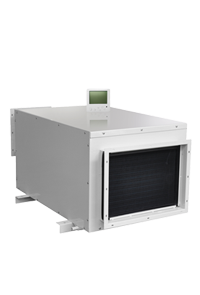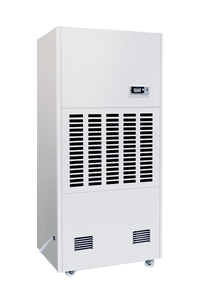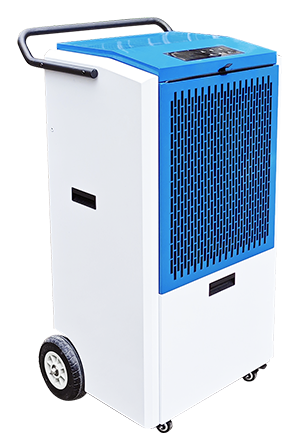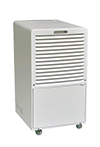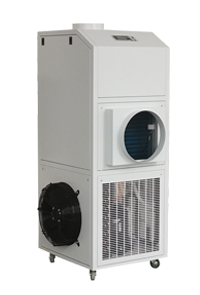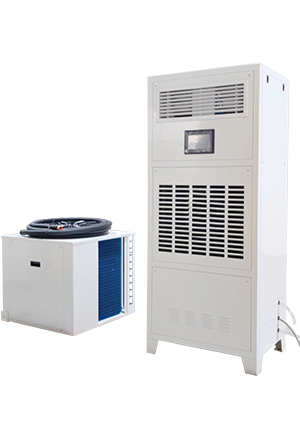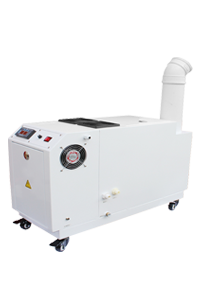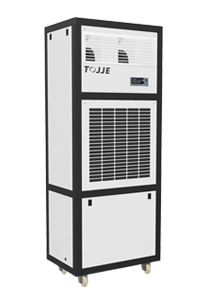News
Using a wet film humidifier in the workplace is an effective way to maintain optimal humidity levels, ensuring a comfortable and healthy environment for employees. Proper use and maintenance of the humidifier are essential for maximizing its performance and longevity. Here are some steps and tips for properly using a wet film humidifier in a workplace setting:
1. Select the Right Location
- Central Placement: Position the humidifier in a central location where airflow is optimal, allowing the humidified air to circulate evenly throughout the room or workspace.
- Avoid Direct Placement Near Workstations: Do not place the humidifier too close to employees’ desks or workstations, as this could cause discomfort or excessive moisture in localized areas.
- Keep Away from Heat Sources: Avoid placing the humidifier near heat sources (like radiators or vents) that may cause the moisture to evaporate too quickly, reducing its effectiveness.
2. Set the Humidity Level
- Monitor Workplace Humidity: Use a hygrometer to measure the current humidity level. Ideal indoor humidity levels for a workplace are typically between 40% and 60%.
- Adjust the Humidifier’s Settings: Most wet film humidifiers come with adjustable settings for humidity output. Set the unit to maintain the desired humidity range without over-humidifying, which can lead to condensation and mold growth.
3. Ensure Proper Water Supply
- Use Clean Water: Wet film humidifiers rely on a continuous water supply to create moisture. Ensure that the water used is clean and free from impurities to prevent mineral buildup and bacterial growth.
- Automatic Refill Systems: If the unit is connected to a water supply, check that the automatic refill system is functioning correctly and that the water pressure is sufficient.
- Manual Refills: For units that require manual refilling, check the water reservoir regularly to ensure it doesn’t run dry. Always refill with fresh water to maintain air quality.
4. Regular Cleaning and Maintenance
- Clean the Water Tank and Filter: Wet film humidifiers use a porous medium (such as a filter or pad) that absorbs water. This medium must be kept clean to prevent the growth of mold and bacteria. Clean or replace the filter according to the manufacturer’s instructions.
- Descale the Unit: In areas with hard water, mineral deposits (like calcium and lime) can build up over time. Regular descaling using an appropriate solution helps prevent blockages and maintains efficiency.
- Wipe Down Surfaces: Periodically wipe down the outer surfaces of the humidifier to remove dust and dirt that can accumulate over time.
5. Check for Proper Airflow
- Ensure Unobstructed Vents: The wet film humidifier relies on airflow to distribute moisture evenly. Make sure that the air intake and output vents are not blocked by furniture, walls, or other objects.
- Maintain the Fan: The internal fan should be inspected regularly for dust buildup, which can hinder airflow. Clean the fan blades as necessary to ensure efficient operation.
6. Monitor Humidity Levels Regularly
- Use a Hygrometer: Place a hygrometer in different areas of the workspace to ensure that humidity levels remain consistent. Over-humidification can cause condensation on windows and walls, leading to potential damage.
- Adjust Based on Weather Conditions: In winter, heating systems tend to dry out the air, so the humidifier may need to work harder. Conversely, in warmer months, you may need to reduce the output.
7. Preventing Water Spillage
- Check for Leaks: Ensure there are no leaks in the water supply line or reservoir. Regularly inspect the unit for signs of wear, especially around connections and seals.
- Drainage Management: If the humidifier has a drainage system, ensure it is properly installed and functioning to prevent excess water accumulation or overflow.
8. Safety Considerations
- Electric Safety: Keep the humidifier away from electrical equipment to avoid any risk of water-related electrical hazards.
- Avoid Over-Humidification: Maintaining proper humidity levels is essential. Over-humidifying can lead to condensation on surfaces, promoting the growth of mold and potentially causing respiratory issues for employees.
9. Maintenance Logs
- Schedule Regular Checks: Set up a maintenance schedule to ensure the humidifier is operating efficiently. Record filter changes, water refills, and cleanings.
- Professional Servicing: If the unit is large or connected to the building’s HVAC system, consider having a professional service the unit annually to ensure all components are functioning properly.
10. Ventilation
- Complementary Ventilation: Ensure that the workspace is well-ventilated. A good balance between humidity and fresh air will help maintain a healthy indoor air environment.
Properly using a wet film humidifier in the workplace involves selecting an appropriate location, setting the correct humidity levels, and performing regular maintenance. By ensuring the humidifier is operating efficiently and maintaining optimal humidity, you can improve air quality, enhance employee comfort, and prevent issues related to dryness or excess moisture.

